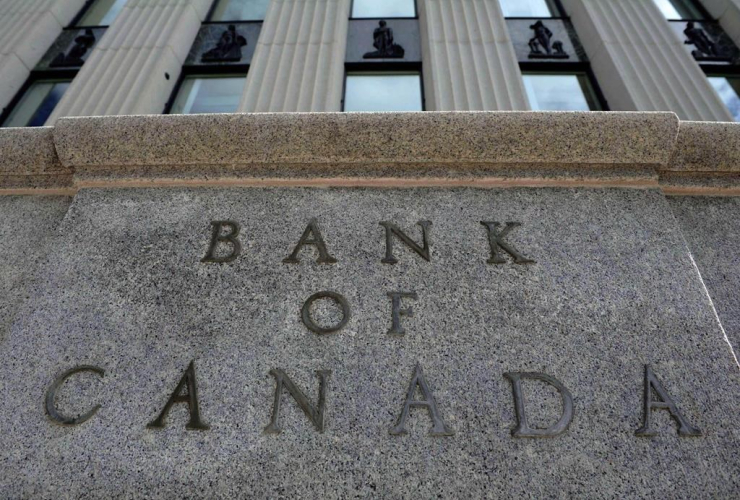By Andy Blatchford.
The Bank of Canada says the federal government's multibillion-dollar spending boost has uplifted what would have been a modest downgrade to its economic growth forecast this year.
The central bank also kept its trend-setting interest rate locked at 0.5 per cent Wednesday, but it would have considered lowering the benchmark if not for the federal stimulus in areas such as infrastructure.
The bank expects the federal investments of about $25 billion over the next two years to more than offset the negative consequences of a slightly stronger dollar, weaker-than-expected global growth and shrinking investment in the oil sector.
It is now predicting the country's real gross domestic product to expand by 1.7 per cent in 2016, up from its January expectation of 1.4 per cent.
The bank said unexpectedly strong growth in the first three months of 2016 was partly due to temporary factors and that is expected to fade with the recent rise in the loonie and slower international demand.
"The combined effect of all the these global and domestic developments would have been a modest downgrade of the bank's outlook," the bank said in a statement that accompanied the latest release of its quarterly monetary policy report.
"However, the fiscal measures announced in the March federal budget will have a notable impact on GDP."
It is now predicting first quarter GDP to register 2.8 per cent, up from one per cent. It's also anticipating one per cent growth in the second quarter of 2016, down from the January forecast of 2.2 per cent.
Using the same baseline numbers in Ottawa's recent budget, it projected federal and provincial government spending to combine to contribute 0.5 percentage points to growth this year and 0.6 percentage points in 2017. The impacts of provincial measures are expected to be minimal.
But even with the government lift, the bank lowered its 2017 growth projection to 2.3 per cent from 2.4 per cent. That's because non-resource exports, while strengthening, aren't expected to be as robust as previously thought due to the recent increase in the dollar.
For 2018, the bank is expecting growth of two per cent, a projection that does not account for the potential impact of federal spending measures.
This was the Bank of Canada's first monetary policy report since the Liberal government tabled its March 22 budget, which contained billions of dollars worth of spending measures and tax relief.
To help fund the plan, the budget projected five straight annual deficits totalling more than $110 billion, starting with shortfalls of $29.4 billion in 2016-17 and $29 billion in 2017-18.
The Finance Department estimated the Liberal budget, which includes measures to enhance infrastructure investments and tax relief for middle- and low-income households, will generate economic growth of 0.5 per cent this year and one per cent in 2017-18.
The Bank of Canada based its assessment on Finance's growth assumptions, which it considered reasonable.
The differences between how the impacts of the fiscal measures between the Bank of Canada and Finance were mostly due to how they were presented. For example, the Bank of Canada numbers were based on calendar years, while the Finance projections were presented in fiscal years.
The bank's report Wednesday listed several federal measures it called "notable" for their likely impact on GDP growth. Without going into details, it highlighted the enhanced child benefit plan, environmental projects, programs to improve the socio-economic conditions for indigenous peoples and investments in affordable housing.
The report was released after several recent indicators have suggested the economy is gaining momentum.
The bank, however, remained cautious about the developments, though it does expect the negative factors hurting the resource sector to gradually fade, with their impact on overall economic growth expected to diminish through 2016.
It also said non-commodity exports in sectors that are sensitive to exchange-rate movements have gained momentum.



Comments